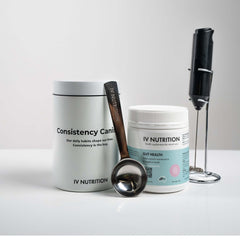Acid reflux, also known as gastroesophageal reflux disease (GERD), is a chronic condition that affects millions of people worldwide. Traditional treatments often include medications and lifestyle changes, but there is growing interest in natural remedies, such as sugarcane fiber. This comprehensive analysis compares the efficacy of sugarcane fiber with traditional treatments for acid reflux, providing an in-depth look at their benefits, drawbacks, and overall effectiveness.
Table of Contents
- Introduction
- Understanding Acid Reflux
- Traditional Treatments for Acid Reflux
- Sugarcane Fiber as a Natural Remedy
- Comparative Analysis: Efficacy and Benefits
- Potential Drawbacks and Side Effects
- Practical Considerations and Usage
- Conclusion
- References
1. Introduction
Acid reflux occurs when stomach acid flows back into the esophagus, causing discomfort and potential damage to the esophageal lining. Traditional treatments typically involve medications like antacids, H2 blockers, and proton pump inhibitors (PPIs). However, natural remedies are gaining popularity due to their potential benefits and fewer side effects. One such natural remedy is sugarcane fiber, which has shown promise in managing digestive health.
2. Understanding Acid Reflux
Causes
- Dietary Factors: Certain foods and beverages can trigger acid reflux, including fatty foods, spicy foods, citrus fruits, and caffeine.
- Lifestyle Factors: Smoking, obesity, and lack of physical activity can increase the risk of acid reflux.
- Medical Conditions: Hiatal hernia, pregnancy, and certain medications can also contribute to acid reflux.
Symptoms
- Heartburn: A burning sensation in the chest.
- Regurgitation: Sour or bitter-tasting acid backing up into the throat or mouth.
- Dysphagia: Difficulty swallowing.
- Chest Pain: Often mistaken for heart-related issues.
- Chronic Cough: Persistent coughing or throat irritation.
3. Traditional Treatments for Acid Reflux
Traditional treatments for acid reflux focus on reducing acid production, neutralizing stomach acid, and improving esophageal motility.
Medications
- Antacids: Provide quick relief by neutralizing stomach acid.
- H2 Receptor Blockers: Reduce acid production.
- Proton Pump Inhibitors (PPIs): Block acid production and promote healing of the esophageal lining.
- Prokinetics: Enhance the movement of the stomach and intestines.
Lifestyle Changes
- Dietary Modifications: Avoiding trigger foods, eating smaller meals, and not lying down immediately after eating.
- Weight Management: Losing excess weight to reduce pressure on the stomach.
- Elevating the Head of the Bed: Preventing acid reflux during sleep.
Surgical Options
- Fundoplication: A surgical procedure to reinforce the lower esophageal sphincter.
- LINX Device: A ring of magnetic beads placed around the lower esophagus to prevent acid reflux.
4. Sugarcane Fiber as a Natural Remedy
Sugarcane fiber is derived from the fibrous residue of sugarcane after the juice has been extracted. It is a natural source of dietary fiber with potential benefits for digestive health.
Benefits of Sugarcane Fiber
- High Fiber Content: Promotes regular bowel movements and supports digestive health.
- Prebiotic Properties: Nourishes beneficial gut bacteria, enhancing gut microbiome balance.
- Natural and Unprocessed: Free from artificial additives and preservatives.
Mechanisms of Action
- Improved Digestion: Fiber aids in the smooth movement of food through the digestive tract, reducing the likelihood of acid reflux.
- Balanced Stomach Acid: A healthy gut microbiome can help regulate stomach acid production.
- Anti-inflammatory Effects: Prebiotics can reduce inflammation in the digestive tract.
5. Comparative Analysis: Efficacy and Benefits
Traditional Treatments
Advantages:
- Quick Relief: Medications like antacids provide immediate symptom relief.
- Effective Acid Reduction: PPIs and H2 blockers significantly reduce acid production.
- Widely Available: Easily accessible through pharmacies and healthcare providers.
Disadvantages:
- Side Effects: Long-term use of medications can lead to side effects such as nutrient deficiencies and increased risk of infections.
- Dependency: Some patients may become reliant on medications for symptom control.
- Cost: Prescription medications can be expensive.
Sugarcane Fiber
Advantages:
- Natural and Safe: Minimal side effects compared to pharmaceutical treatments.
- Supports Overall Gut Health: Promotes a healthy gut microbiome and improves digestive function.
- Sustainable: An environmentally friendly option derived from renewable resources.
Disadvantages:
- Delayed Effect: May take longer to notice improvements compared to immediate relief from medications.
- Individual Variability: Effectiveness can vary based on individual gut health and dietary habits.
- Availability: May not be as readily available as over-the-counter medications.
6. Potential Drawbacks and Side Effects
Traditional Treatments
- Antacids: Overuse can lead to constipation or diarrhea, and long-term use can affect calcium and magnesium levels.
- H2 Blockers: Potential side effects include headache, dizziness, and gastrointestinal issues.
- Proton Pump Inhibitors: Long-term use can increase the risk of bone fractures, kidney disease, and vitamin B12 deficiency.
Sugarcane Fiber
- Digestive Discomfort: Some individuals may experience bloating, gas, or mild digestive discomfort when first incorporating high-fiber foods.
- Allergic Reactions: Rare but possible, especially in individuals allergic to sugarcane.
7. Practical Considerations and Usage
Traditional Treatments
- Usage Guidelines: Follow dosing instructions and guidelines provided by healthcare professionals.
- Monitoring: Regular check-ups to monitor for potential side effects and adjust treatment as necessary.
Sugarcane Fiber
- Incorporation into Diet: Add to smoothies, yogurt, or baked goods for a simple way to increase fiber intake.
- Dosage: Start with a small amount and gradually increase to allow the digestive system to adjust.
- Hydration: Ensure adequate water intake to prevent constipation when increasing fiber consumption.
Click here to view IV Nutrition's Virgin Sugarcane Fiber product and all its benefits.
8. Conclusion
When comparing sugarcane fiber and traditional treatments for acid reflux, both have their distinct advantages and potential drawbacks. Traditional treatments offer quick and effective relief but come with a risk of side effects and long-term dependency. On the other hand, sugarcane fiber provides a natural and holistic approach to managing acid reflux, supporting overall digestive health with minimal side effects.
For individuals seeking a natural alternative or complementary approach to traditional treatments, incorporating sugarcane fiber into their diet may offer significant benefits. However, it's essential to consult with a healthcare professional before making any significant changes to treatment plans or dietary habits.
References
- National Institute of Diabetes and Digestive and Kidney Diseases. (2021). Acid Reflux (GER & GERD) in Adults. Retrieved from NIDDK.
- Mayo Clinic Staff. (2021). GERD. Retrieved from Mayo Clinic.
- American College of Gastroenterology. (2020). Guidelines for the Diagnosis and Management of Gastroesophageal Reflux Disease. Retrieved from ACG.
- Cleveland Clinic. (2021). Heartburn or Gastroesophageal Reflux Disease (GERD). Retrieved from Cleveland Clinic.
- WebMD. (2021). Diet Tips for Gastroesophageal Reflux Disease (GERD). Retrieved from WebMD.





